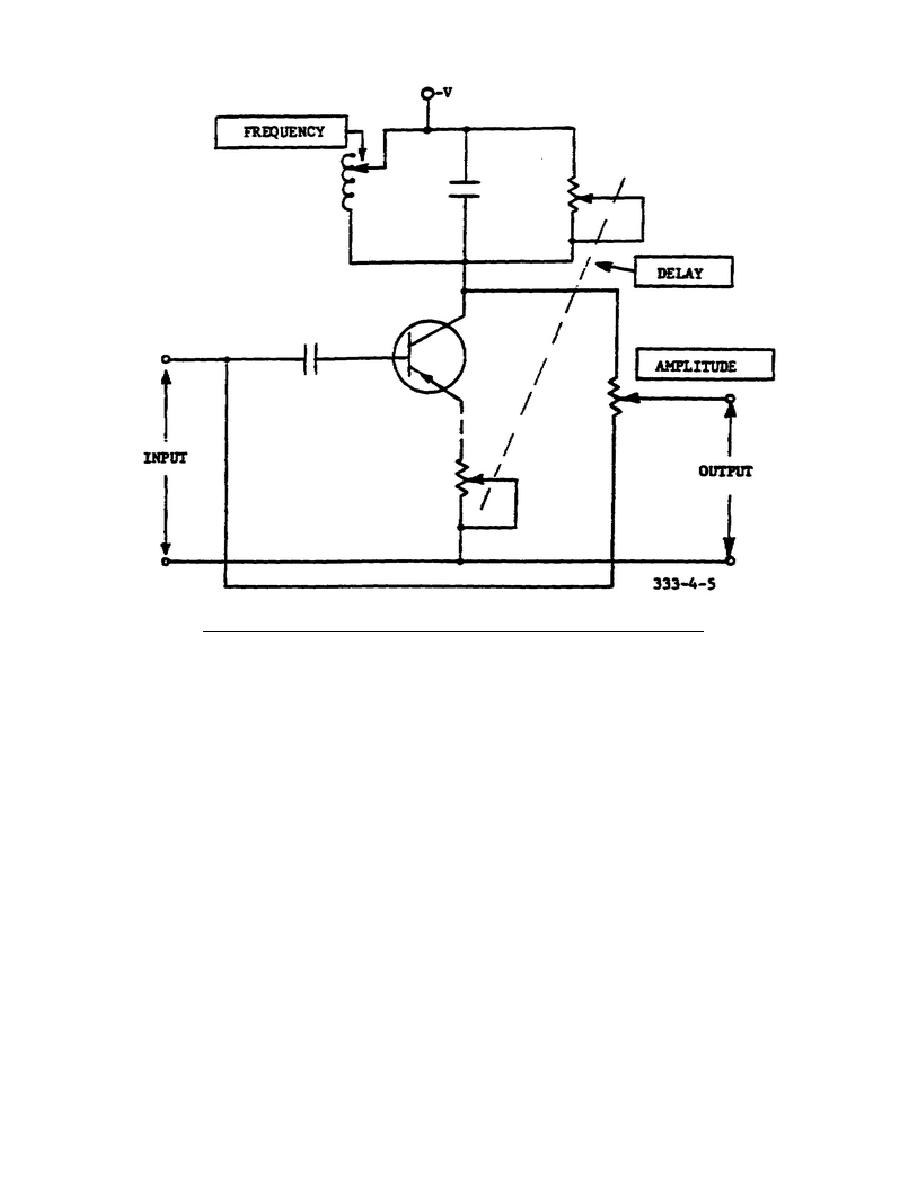
Figure 4-5.
One equalizer section, schematic diagram.
effect on the other, so he attempts to strike the best compromise attainable.
Note that each equalizer section contains its own amplifier, thus each section
can be operated independently.
The line amplifiers that are common to all
spectrum segments amplify all of them together to the extent necessary to
compensate for line and equalizer loss. Six of the sections have a frequency
range of 0.5 to 2.2 kHz, and six have a range of 1.2 to 3.5 kHz. With this
arrangement, there is an overlap of 1.2 to 2.2 kHz to assure that equalization
is available anywhere within the voice band of 0.5 to 3.5 kHz.
In the
equalizing process the circuit conditioner uses the number of sections he finds
necessary to satisfy requirements. During the adjustment procedure he adjusts
each of the sections used to a different frequency segment in the spectrum
designated by the parameters.
4-4. EQUALIZATION PROCEDURE
Equipment now in use is equalized empirically; that is, known signal
frequencies at uniform levels are transmitted from one end of the system. At
the opposite, or receiving, end of the system, the circuit conditioner adjusts
the controls of the equalizer while watching meter readings. This procedure is
time consuming, and requires a great deal of cooperation and patience on the
51



 Previous Page
Previous Page
